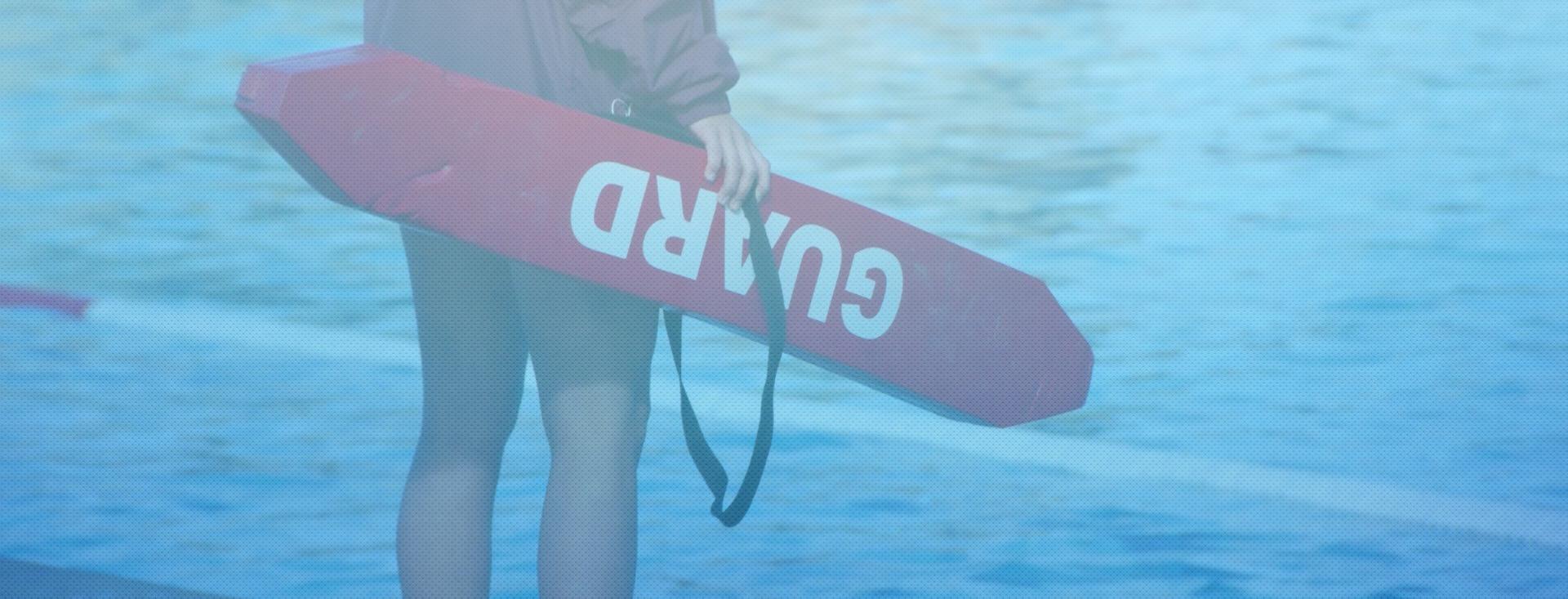
for full information and to start your training today:

This American Lifeguard Association Course covers Lifeguarding, Lifeguard Courses, Lifeguard Training Courses, and Lifeguard Classes. Our Lifeguard course offers two different certifications. One for shallow and deep water and the other is for shallow water only. There is no cost difference and the training is very similar. The Shallow Water Lifeguard certification can be issued to individuals who are not strong swimmers, but can swim 50 yards instead of the new requirement of swimming 300 yards continuously for deep-water guards. They can even walk the brick, which the deep-water guards need to swim 20 yards with a 10lb weight. Now individuals who are not strong swimmers, but have no fear of the water can still be a Lifeguard at pools that do not have deep-water. If the student is unable to pass the more strenuous deep-water requirement at the time they originally take the training, but is successful in all other areas of training, they will receive a shallow water Lifeguarding certification. If at anytime they gain the ability to pass the more strenuous swim requirements they may upgrade to the deep water Lifeguarding at no additional cost. We utilize the newest training aids for all our training programs.
Professional Lifeguard Recertification: This training covers Lifeguarding, CPR/AED, First Aid and Oxygen Supplement, and Blood Pathogens. ALA is offering the new Professional Lifeguarding recertification or roll out program to the new material for individuals who have been a Lifeguard in the past. Individuals do not need to have a current Lifeguard certification at the time.
HOW TO FIND TRAINING PROGRAMS IN YOUR AREA,
AND REGISTER
To learn more about what training programs are offered in your local area and how to register for them, You may click here.
GENERAL INFORMATION ON ALL ALA LIFEGUARDING COURSES
The purpose of the American Lifeguarding course is to teach candidates the Knowledge and skills needed to prevent and respond to aquatic emergencies. The course content and activities prepare candidates to recognize and respond quickly and effectively to emergencies and prevent drowning and injuries. Listed below you will find a list of skills that will be covered in this course.
The training program requires strenuous physical activity. You are encouraged to check with your health-care professional before participating in the practice sessions. If a medical condition or disability exists that might prevent participation in the activities, or there are questions about fully participating in the Lifeguarding course, please contact us by e-mail to discuss this before the course begins.
To enroll in the Lifeguarding course, you may be any age, but US Labor Laws require that you must be 15 years or older to work at a swimming pool, waterpark, or lake, and 16 years or older to work at beaches. To successfully pass the full Lifeguarding course, you must be able to demonstrate the following skills:
-Swim 300 yards continuously, using these strokes in the following order:
-100 yards of front crawl using rhythmic breathing and a stabilizing, propellant kick. Rhythmic breathing can be performed either by breathing to the side or to the front.100 yards of breaststroke using a pull, breathe, kick and glide sequence.100 yards of either the front crawl or breaststroke. The 100 yards may be a combination of front crawl and breaststroke. Starting in the water, swim 20 yards using front crawl or breaststroke, surface dive 7- 10 feet, retrieve a 10-pound object, return to the surface, swim 20 yards back to the starting point with the object and exit the water without using a ladder or steps, within 1 minute, 40 seconds.
If your swimming skills are not strong, but you can swim at least 50 yards and walk the brick test requirement, it may be possible to receive a Shallow Water Lifeguarding card. At any time in the future if you swimming skills increase to the level of deep-water requirements, we will issue the Professional Lifeguarding card that will allow you to guard at both deep water and shallow water pools at no additional cost.
Upon successful completion of the Lifeguard course, each participant will receive an American Lifeguard Certificate indicating Lifeguard, CPR/AED for the Professional Rescuer and First Aid, which are all valid for 2 years under the new 2012 standards.
Lifeguarding Course Participants will learn:
RESCUE SKILLS
– Slide-In Entry
– Stride and Compact Jumps
– Rescue Approach-Front Crawl or Breaststroke
– Simple Assist
– Extension Assist from the Deck
– Reaching Assist with Equipment and Throwing Assist
– Swimming Extension Rescue
– Active and Passive Drowning Victim Rear Rescue
– Two-Person Removal from the Water Using a Backboard
– Passive Submerged Victim-Shallow Water
– Multiple-Victim Rescue
– Feet-First Surface Dive
– Submerged Victim-Deep Water
– Front and Rear Head-Hold Escape
CARING FOR HEAD, NECK OR BACK INJURY SKILLS
– Manual In-Line Stabilization for a Head, Neck or Back Injury on Land- Lying Down, Sitting or Standing
– Using a Backboard for a Standing Victim on Land
– Head Splint Technique-Face-Up Victim, Shallow Water at or Near Surface
– Head Splint Technique-Face-Dow Victim, Shallow Water at or Near Surface
– Head and Chin Support-Face-Up Victim, Shallow Water at or Near Surface
– Head and Chin Support-Face-Down Victim, Shallow Water at or Near Surface
– Head Splint Technique-Face-Up Victim, Deep Water at or Near Surface
– Head Splint Technique-Face-Down Victim, Deep Water at or Near Surface
– Head and Chin Support-Face-Up Victim, Deep Water at or Near Surface
– In-Line Stabilization for a Submerged Victim-Face-Up, Face-Down or on One Side in Deep Water
– Using a Backboard in Shallow and Deep Water
CPR/AED FOR THE PROFESSIONAL RESCUER SKILLS
– Removing Gloves
– Initial Assessment
– Rescue Breathing-Adult, Child and Infant
– Using a Bag-Valve-Mask Resuscitator-Two Rescuers
– Conscious Choking-Adult, Child and Infant
– Unconscious Choking-Adult, Child and Infant
– CPR-Adult, Child and Infant
– Two-Rescuer CPR-Adult, Child and Infant
– Using an AED-Adult and Child
FIRST AID SKILLS
– Secondary Assessment
– Controlling External Bleeding
– Applying a Sling and Binder
– Applying an Anatomic Splint
– Applying a Soft Splint
FINAL SKILL SCENARIOS TO BE DEMONSTRATED
– Final Skill Scenario 1-Active Drowning Victim
– Final Skill Scenario 2-Submerged Passive Drowning Victim
– Final Skill Scenario 3-Head, Neck or Back Injury.
Note there are several ways to care for a spinal injury in the water. In this scenario the victim will be face down and the student will need to rotate the victim face up with their choice of any of the different saves for this purpose.





